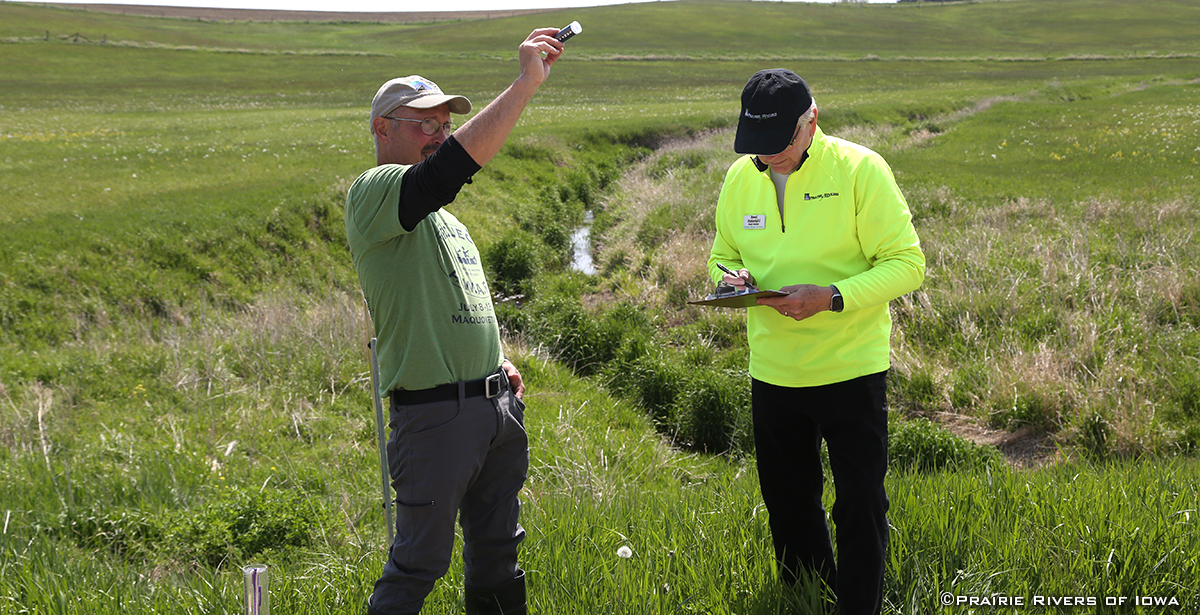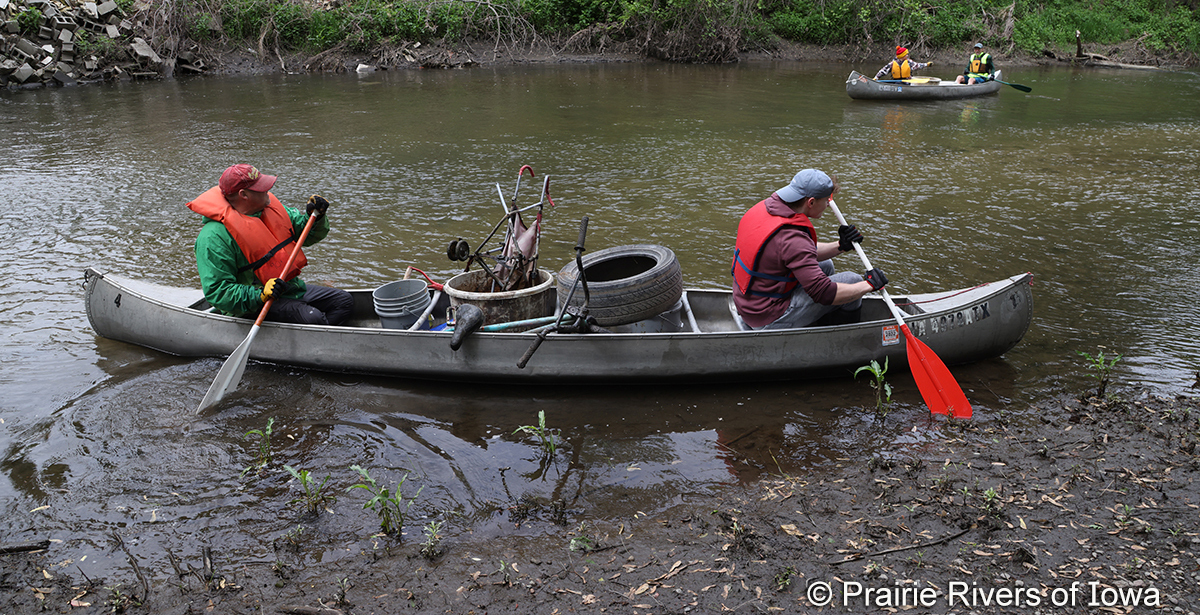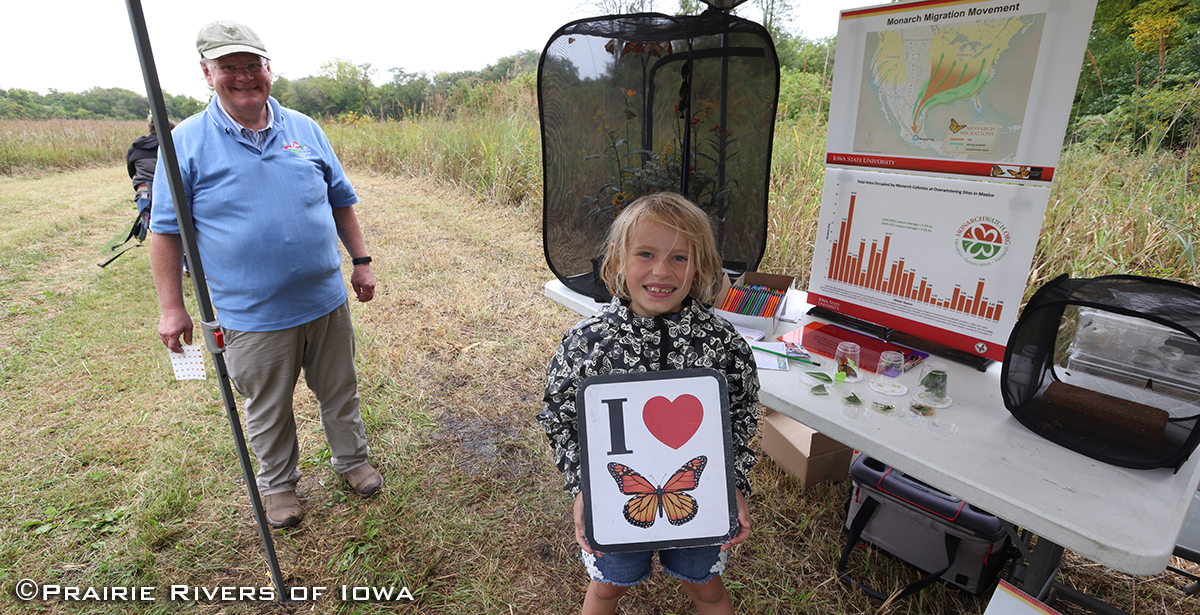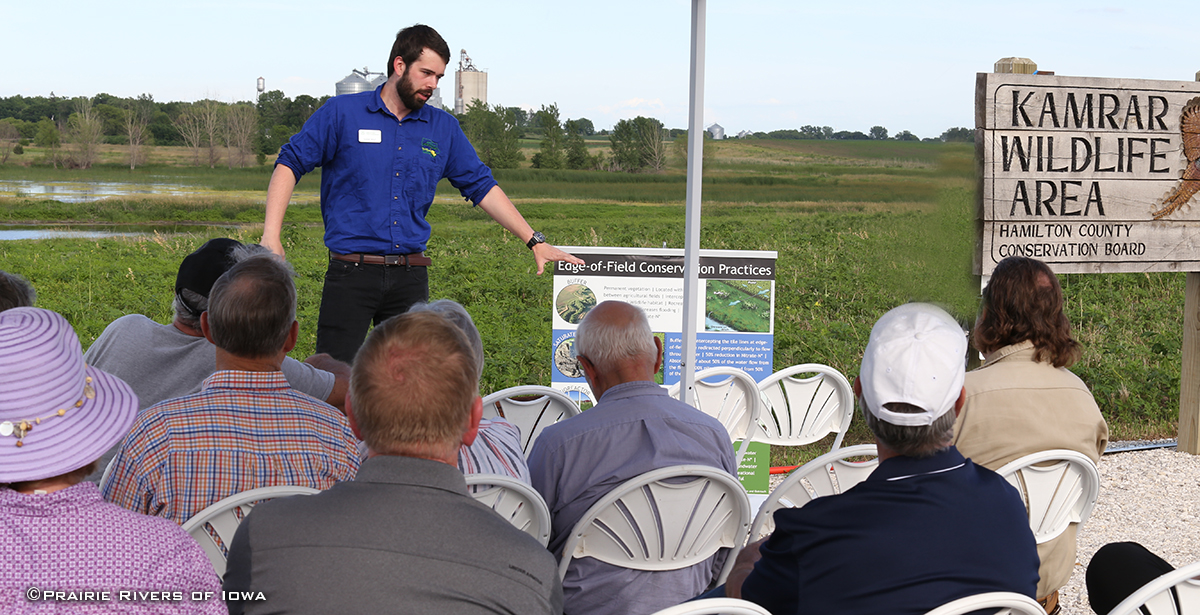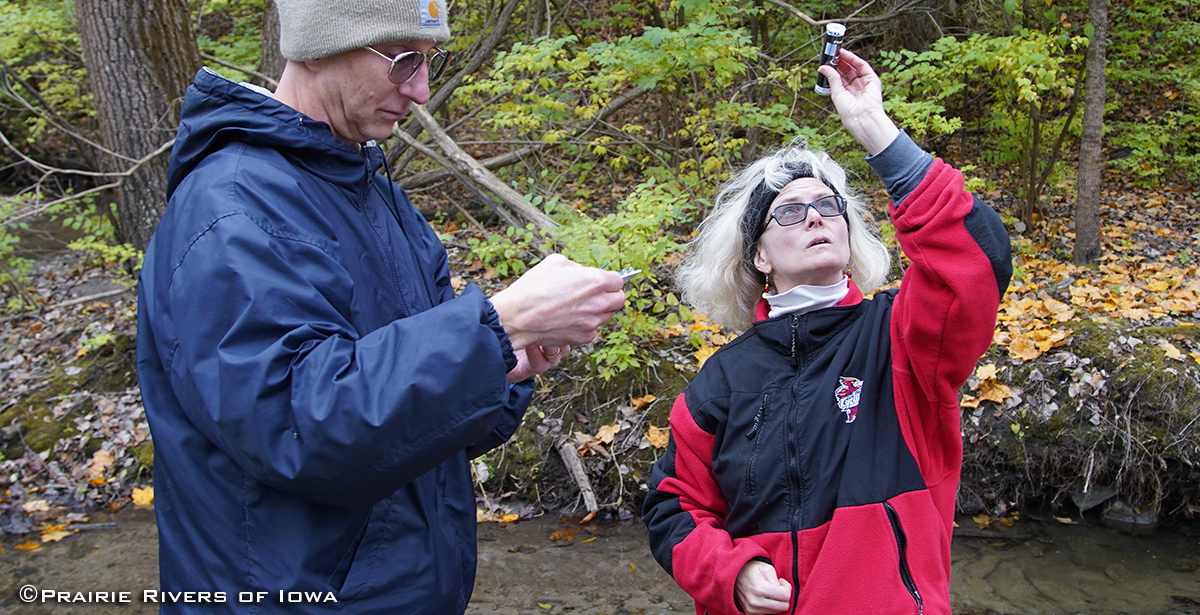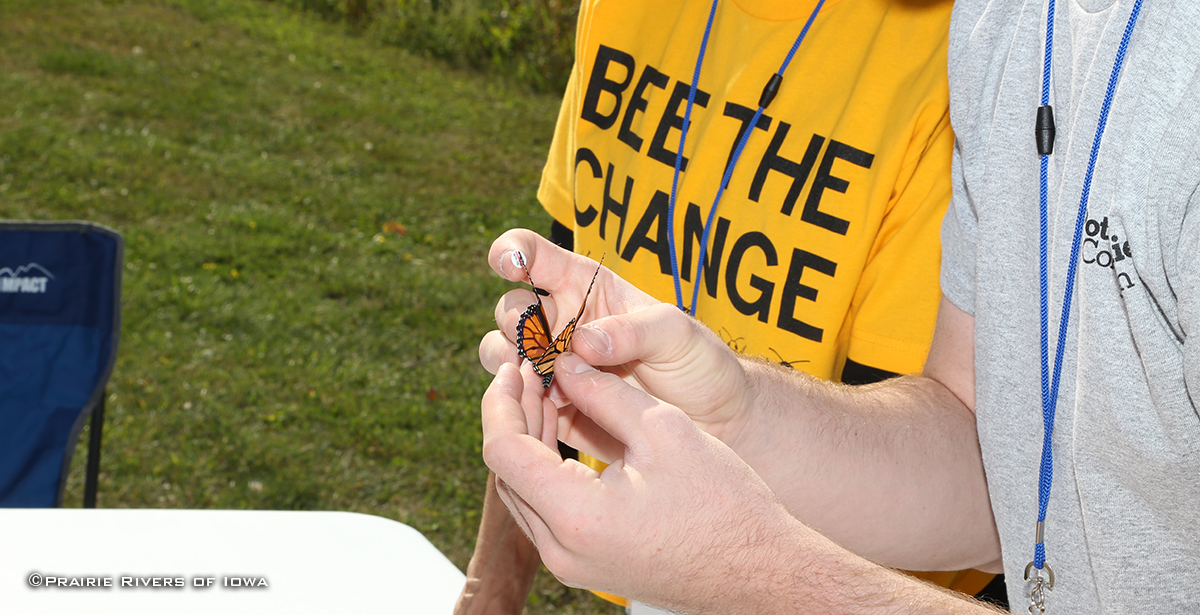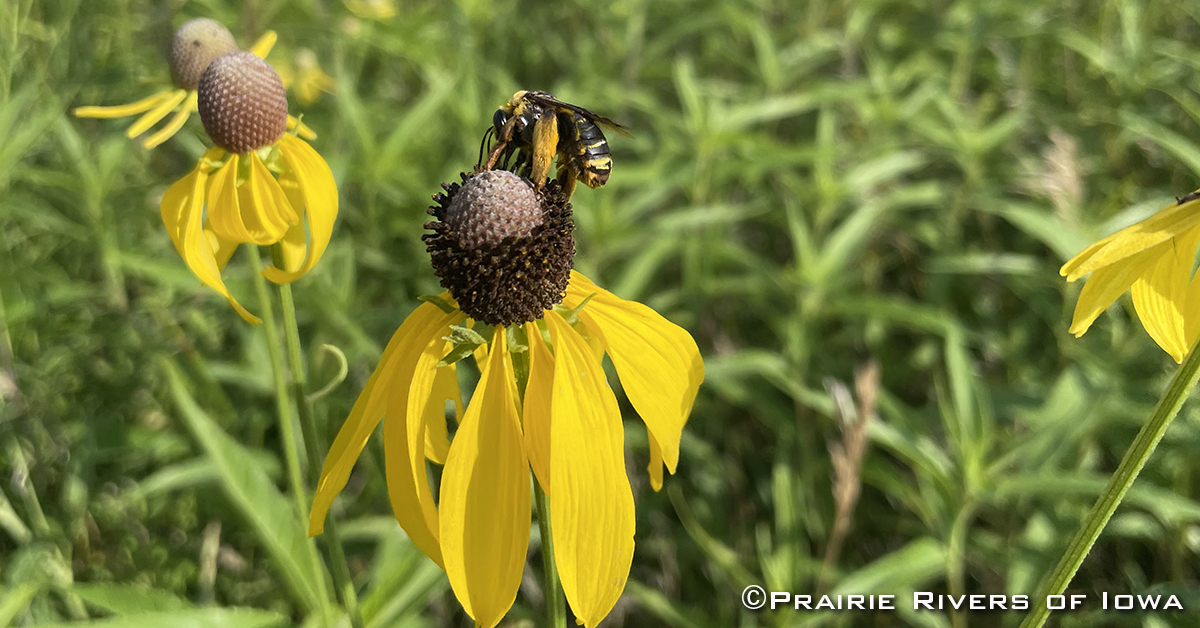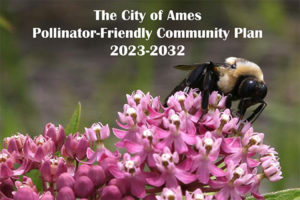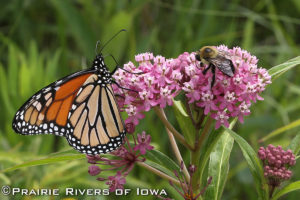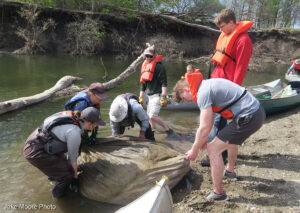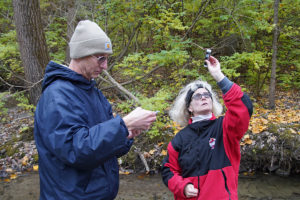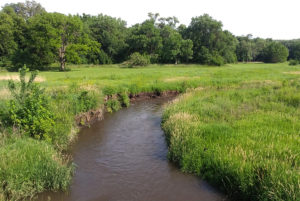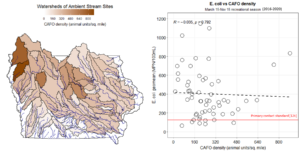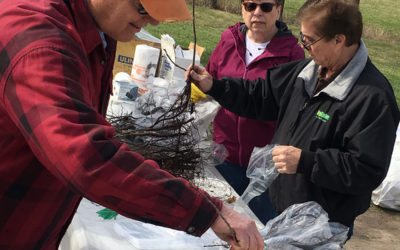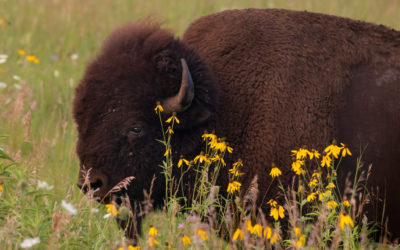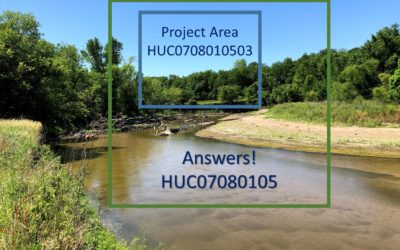Watersheds and Wildlife
The Watersheds and Wildlife Program works to improve water quality in rivers and lakes and to restore habitat for the 100 species of butterflies and 400 species of bees found in Iowa. We accomplish this work through robust education and monitoring, and by partnering with both private landowners and local government.
Past projects have focused the Ioway Creek and Skunk River watersheds in Story, Boone, and Hamilton counties.
Here is what we’re up to now:
Ames Pollinator-Friendly Community Plan
Prairie Rivers and the City of Ames have a vision to become a leader in developing and sustaining pollinator habitat that will enrich the quality of life for the human and biological communities of Ames.
Enrolling working lands into butterfly habitat
This upcoming project will help farmers and landowners create habitat for monarch butterflies and other pollinators, and enhance the value of existing conservation lands for monarchs. The project has a special focus on women landowners.
Creek Cleanups
Over the past few years, we helped plan five volunteer events that removed over 9000 pounds of trash from Ioway Creek and other streams in central Iowa. Depending on the weather, we may be walking, wading, or paddling canoes, but it’s always a good time! Keep an eye on our Events page–we do at least one a year.
Water monitoring in Story County
Water quality in most creeks and lakes in Story County is not tested by state agencies, so in 2020 we worked with 9 partner organizations to plan for how we could sustain a monitoring program at the local level. Prairie Rivers continues to support the effort by collecting samples, organizing volunteer events, and making sense of the data.
Movement Infrastructure for Clean Water in Iowa
We were able to build relationships with some of the wide range of groups that do water monitoring across Iowa, as well as dive deep into analysis of a statewide dataset, thanks to grant from the Water Foundation which wrapped up in November of 2024.
Relationships between water quality and livestock density
We spotted some interesting patterns in a statewide database that reveal some ways in which manure can impact Iowa’s rivers, and some ways it doesn’t. Our finidngs were presented to the Raccoon River Watershed Association (which helped fund the project) and the 2024 Iowa Water Conference.
Conservation Connection Blog
A big part of our work is telling engaging stories to help explain the science and policy behind the environmental issues we work on. Here are three of our latest posts from the Conservation Connect Blog.
Jerry Radke Leaves a Legacy
Jerry Radke of Nevada, Iowa was a conservationist known for his hard work and a “yes I can” attitude with a passion for improving soil and water quality.
His love for the outdoors and the environment started on the family farm where at a young age Jerry helped work dairy and beef cattle, hogs, chickens, ducks, and geese. Jerry would tell the story about how at the age of three his father put him on a tractor where he had to stand and brace his head against the seat so his feet could reach the petals.
Iowa Lands Prominent North American Prairie Conference
Once in a while something big and potentially impactful happens! Something that brings together people from around North America to address the issues of biodiversity, climate change, soil and water quality and more. Something that lays out information from researchers, educators, allied professionals, students, conservation specialists, landowners and organizations who will share their latest findings while raising important questions during dozens of informative sessions and exciting, hands-on field trips.
Think Outside the HUCs
Tracking progress of conservation projects with water monitoring is tricky, but we have some good news to share! You just need to think outside the box…
Katelyn Rinicker
Pollinator Conservation Specialist
Dan Haug
Water Quality Specialist

